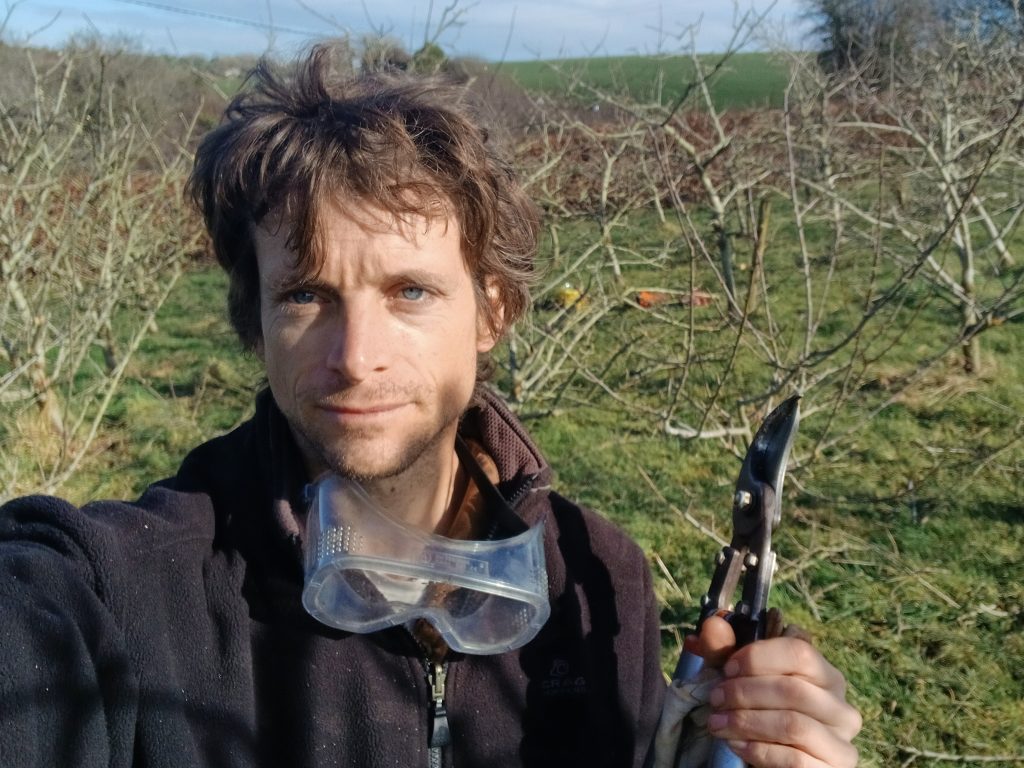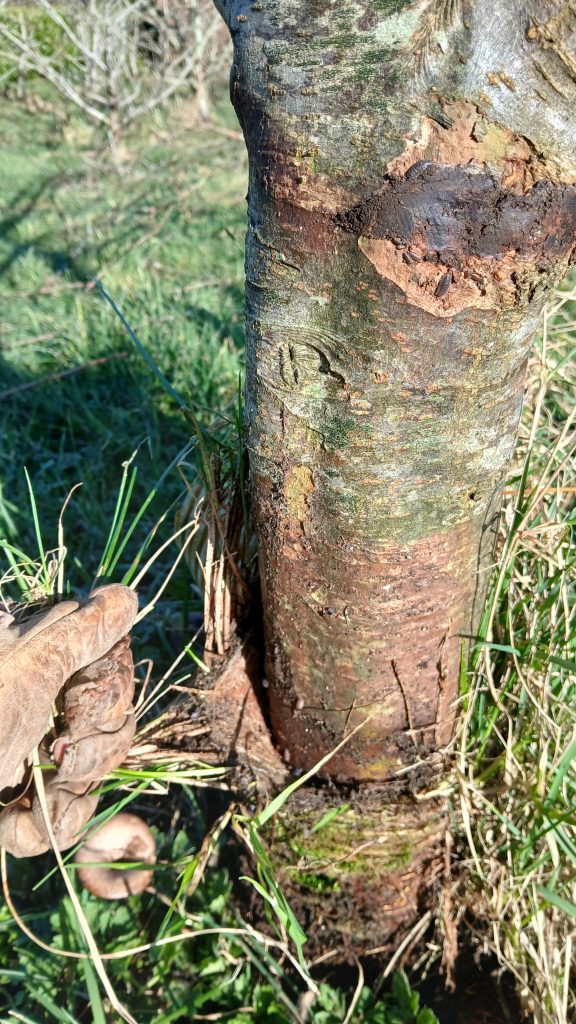Recently I finished an orchard pruning job near Cork. Most of my pruning work is on domestic scale orchards that I manage in a day, but sometimes there are bigger orchards that need a few days, or even a week to get into shape.
This orchard had nearly sixty trees and was located in a garden on the outskirts of the city. The site was on a gentle ridge high up on one of the many rolling hills to the south of Cork city, with a northerly aspect. There was little wind shelter to the site save from the landform itself.
Many of these conditions are not ideal – the wind exposure, the aspect and the fact that some of the trees were planted too close together. As regards health however, the trees were overall in the better half of orchards that I have tended to in County Cork.

Climate and soil conditions for orchards in Ireland
One reason that the orchard was in reasonable health is that the owners had not done a bad job of previous pruning work, and this is unusual! I find that trees left to their own devices are easier to retrieve – as more choice is left to me regarding the structuring of the tree. The main reason however, with respect, is I would say that the soil conditions and climate are favourable. From an Irish perspective, fruit trees generally do very well in the less rainy and better drained areas of the country.
In terms of rainfall the west of Ireland – including parts of West Cork – and any other mountainous areas, can have double the annual rainfall experienced in and around drier areas like around Cork city and east Cork, and triple that experienced in Dublin. The city dwellers may find this unbelievable but the Met Eireann statistics back it up. My lived experience also agrees with this – it is much easier to find dry days to go pruning anywhere east of Macroom than it is to find good conditions for work for any of my western orchard or design customers.

Apple tree rootstock effects and the special case of Bramley’s Seedling
This orchard is mostly composed of semi-dwarfing but mature trees that I am guessing were on a rootscock like M26 giving a compact shape. In general the more dwarfing the rootstock, the more particular the tree will be in its requirement for longer support staking and well drained soil. These smaller trees are however much easier to prune so if you can provide wind shelter and well draining soil conditions then orchards on dwarfing and semi-dwarfing rootstocks are a good choice in Ireland.
Lower down the slope there is a group of larger trees, some of which the customer identified as Bramley’s Seedling. In general the rootstock variety is the main determinant of the mature size of an apple tree, but in the case of Bramley’s Seedling, the scion wood definitely exhibits as a larger more vigourous tree compared to other varieties on an equal rootstock.

How to prune a falling over or leaning apple tree
In any case I was also dealing with some bigger trees many of which were really too close together. In one case that was badly leaning the best option was to sacrifice the tree and open up some sunlight and ventilation for the trees surrounding it on every side. I restored balance to the other leaning trees by pruning. Usually when there is life in a leaning tree I can restructure it selecting one of the newly vertical branches as the new leader and pruning accordingly. This works extremely well in situations like this where an orchard has leaning trees due to wind exposure. Apple trees have amazing powers of recovery when assisted and given favourable conditions.
First do no harm to your apple tree
Staking and tree guards are used to help young trees establish and protect from wind and animal damage respectively. Outside of professionally run orchards however, they are usually applied when planting and are left on the tree indefinitely. This can cause major damage to the tree and can even cause the tree to die prematurely. Stakes can rub against the growing tree and cause injury leading to disease. Improvised tree ties make from rope, wire or plastic can eat into the growing tree causing severe injury about the tree circumference. Besides slowly strangling the tree, these injuries can become disease and parasite entry points.

Tree guards can also get out-grown and cause similar issues. Tree guards can be a breeding ground for slugs and woodlice and create a poorly ventilated environment about the tree trunk where the sun and wind cannot reach. During maintenance I remove or replace these props if they are still needed, but normally the tree becomes big and strong enough to support itself. In this case I discard these props and treat the tree for any injuries caused.
